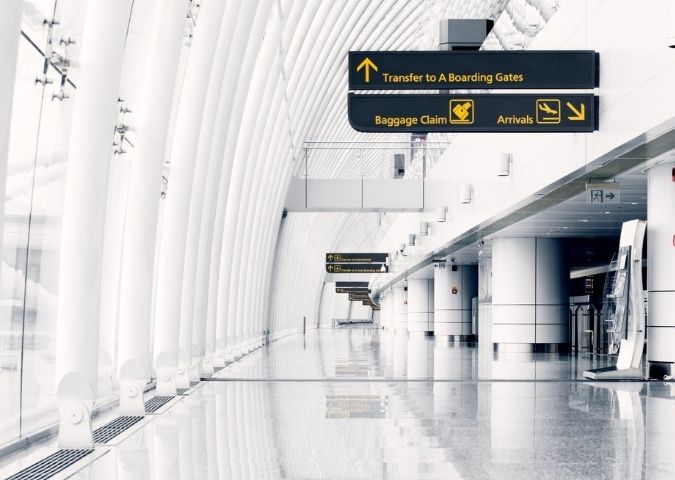Cambodia
For a trip to Cambodia, you need a valid visa. Which type is suitable for your travel plans and whether you can also enter Cambodia with an E-Visa depends on a number of factors. We support you in applying for your electronic travel authorization for Cambodia.
Country information
Are you planning a vacation in Cambodia? Then look forward to temple towns on the banks of the Mekong, tropical landscapes, and beautiful beaches! But before you go, check out our travel tips for Cambodia.
Quick facts Cambodia
- Location: Southeast Asia
- Area: 181,040 km²
- Currency: Riel (KHR)
- Official language: Khmer
- Population: approx. 16.5 million
- Capital city: Phnom Penh
Climate in Cambodia
The climate in Cambodia is tropical and determined by the monsoon. During the dry season from November to March, temperatures are slightly lower than in the wet season from April to October. The coldest month is December with an average of 26 °C and the warmest is April with an average of 30 °C.
Landscape and nature in Cambodia
On your Cambodia trip, you will see different types of landscapes, including forests, mountains, tropical rainforests, coasts with mangrove forests, and marshlands. Cambodia's diverse wildlife includes Indian elephants, tigers, leopards, and bears.
Entering Cambodia
For a trip to Cambodia, you need an e-Visa or visa. Also, check the current entry requirements for Cambodia before you travel.
Getting around in Cambodia
In Cambodia, the easiest way to get around is by car. However, you can expect bad roads, so schedule more time for all routes.
Trains, buses, and boats are available in some places, but often in a disastrous condition and thus less safe than in Europe, for example. The same applies to the Cambodian domestic flight network.
Means of payment in Cambodia
In Cambodia, the best way to get by is with cash. Besides the Cambodian Riel, you can also pay smaller amounts (under $ 10) in US Dollars.
Credit card payment is possible in larger hotels and restaurants, and there are also more and more ATMs in Cambodia.
Travel and safety tips for Cambodia
Since the local security situation can change spontaneously, keep up to date with current events and forecasts during your trip with the help of news and weather reports.
Health information for Cambodia
There are no mandatory vaccinations for Cambodia, provided you are not entering from a country classified as a yellow fever area. Current information on this can be found on the WHO website. If you reside in one of the risk areas, you must provide proof of yellow fever vaccination to enter Cambodia.
Furthermore, the following travel vaccinations are recommended:
- Hepatitis A
- Hepatitis B
- Dengue fever
- Typhoid fever
- Rabies
- Japanese encephalitis
Maintain food and drinking water hygiene to protect yourself from diarrheal diseases. Do not drink tap water or water of unknown origin, and use bottled water, even for brushing teeth or washing dishes. Clean your hands before eating or preparing meals, and keep insects away from your food.
Attractions in Cambodia
Mysterious temples, rushing waterfalls, artistic rice fields – the magic of Cambodia is impossible to resist. The country's most famous attraction is Angkor Wat located North of the city of Siem Reap. The gigantic temple complex consists of more than 1,000 individual temples and is the largest religious structure in the world!
Cambodia's capital Phnom Penh, also known as the "Pearl of Southeast Asia," impresses with a magnificent royal palace and a colorful city life where there is no shortage of bars and clubs. Nature lovers can also look forward to heavenly places to visit in Cambodia. Head to the dream beaches on Koh Rong Sanloem Island, the pristine forests of Mondulkiri, the paradisiacal waterfalls in Phnom Kulen National Park, and Tonle Sap, the largest lake in Southeast Asia!
Culture in Cambodia
Cambodia's fascinating culture is strongly influenced by the legacy of the ancient Khmer Empire. The classical Khmer architecture has survived the centuries in temple complexes such as Bayon, Baphuon, and Ta Prohm, and still bears witness to the craftsmanship of their creators. Equally fascinating is the country's long-standing dance tradition, which today is expressed above all in the elegant Apsara dance.
Culinary highlights
Cambodian cuisine brings together influences from Vietnam, Malaysia, Laos, Thailand, China, and France. Sweet and sour or spicy dishes prepared in a wok on a charcoal stove, are very common in Cambodia. Key ingredients include noodles, rice, fish, chicken, eggs, vegetables, pineapple, and herbs such as lemongrass or cilantro. Some popular meals are curries, soups and stews, and deep-fried snacks.

